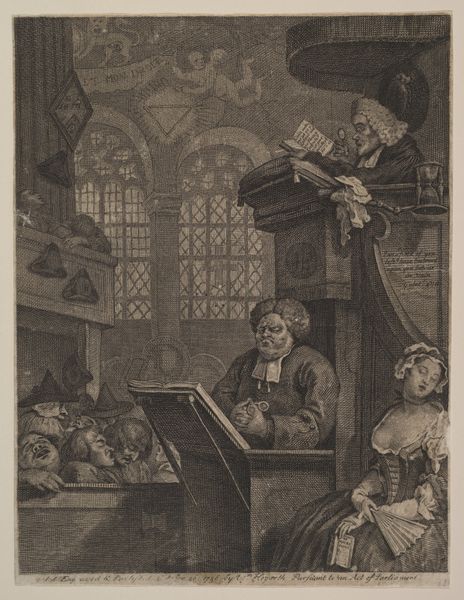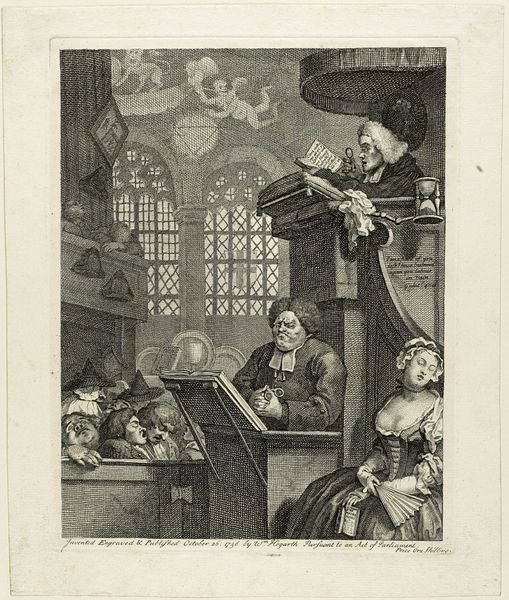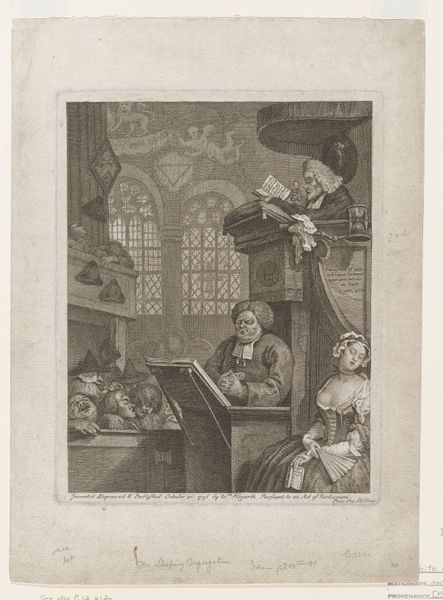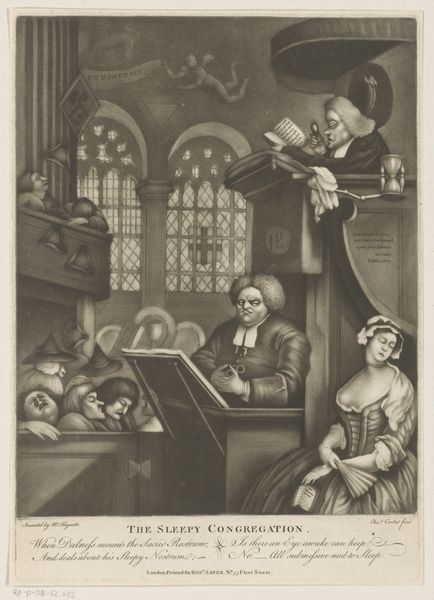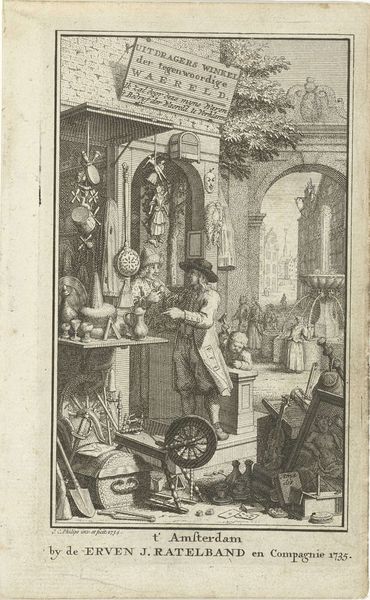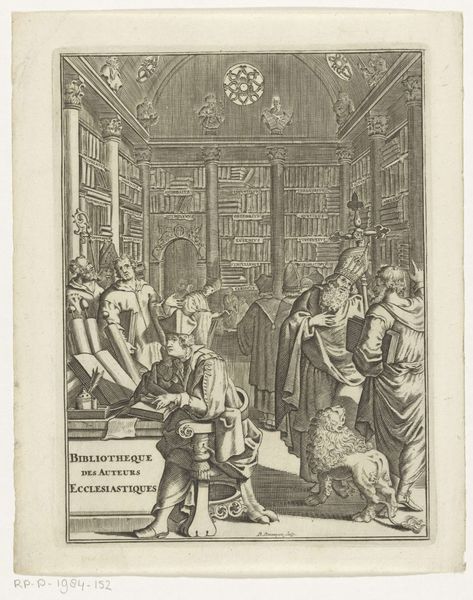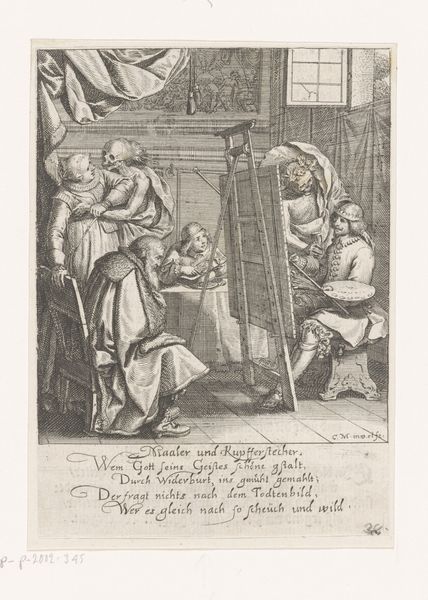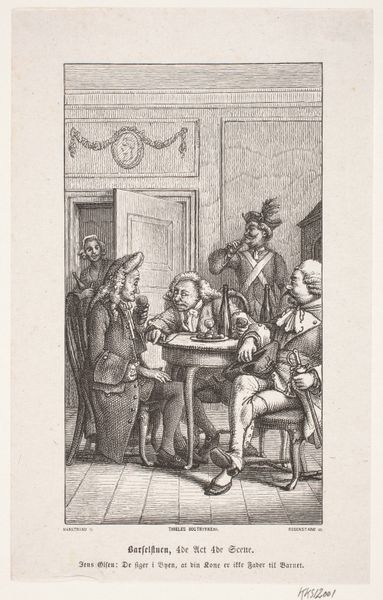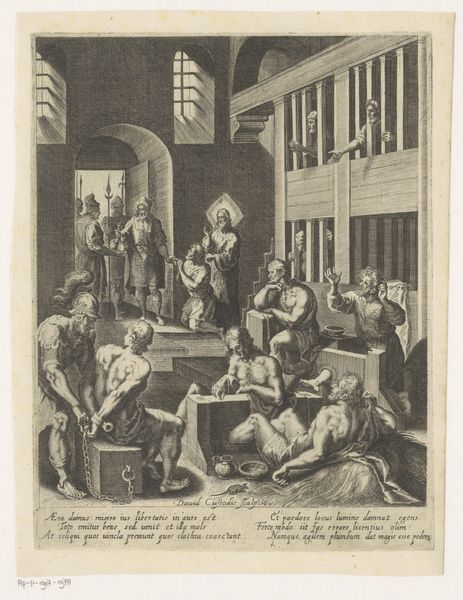
print, engraving
#
narrative-art
#
baroque
# print
#
genre-painting
#
history-painting
#
engraving
Dimensions: 294 mm (height) x 225 mm (width) (bladmaal), 265 mm (height) x 209 mm (width) (plademaal), 252 mm (height) x 196 mm (width) (billedmaal)
William Hogarth created this engraving, "The Sleeping Congregation," in 1736. The composition is dominated by the rigid lines of the church interior, yet softened by the curves of the figures, creating a tension between order and human frailty. Hogarth uses the contrast between light and shadow to direct our gaze through the scene, highlighting the central figures of the bored parish clerk, the drowsy clergyman, and the inattentive members of the congregation. The carefully rendered textures, from the stone walls to the fabrics of the clothing, add to the piece's visual richness. The arrangement of figures and architectural elements suggests a deeper commentary on the state of religious observance. Hogarth destabilizes established meanings by juxtaposing religious symbolism with very human failings of boredom and inattention. The clergyman’s elevated position is undermined by his slumber, creating a visual critique of religious authority. The print operates as a complex interplay of visual signs, inviting us to reflect on the relationship between outward piety and inward belief. This relationship is neither fixed nor stable, but part of a cultural discourse that continues to be re-interpreted.
Comments
No comments
Be the first to comment and join the conversation on the ultimate creative platform.
